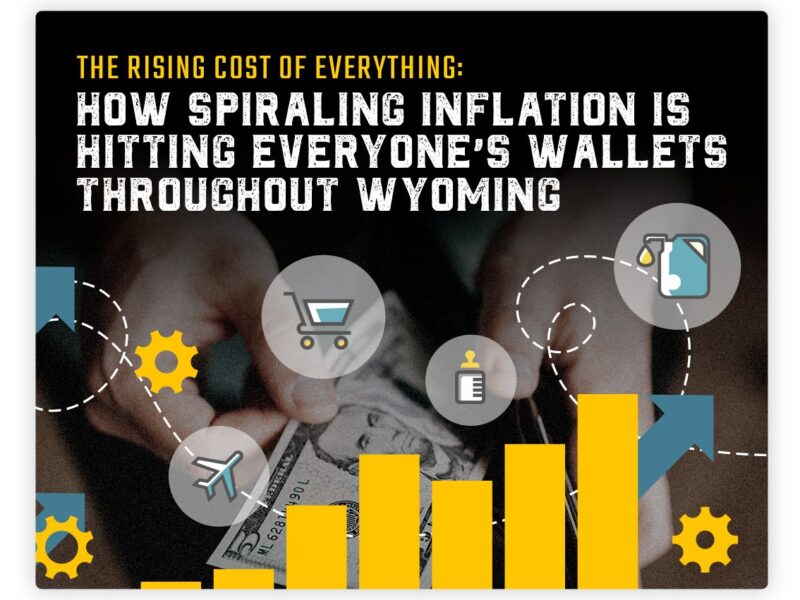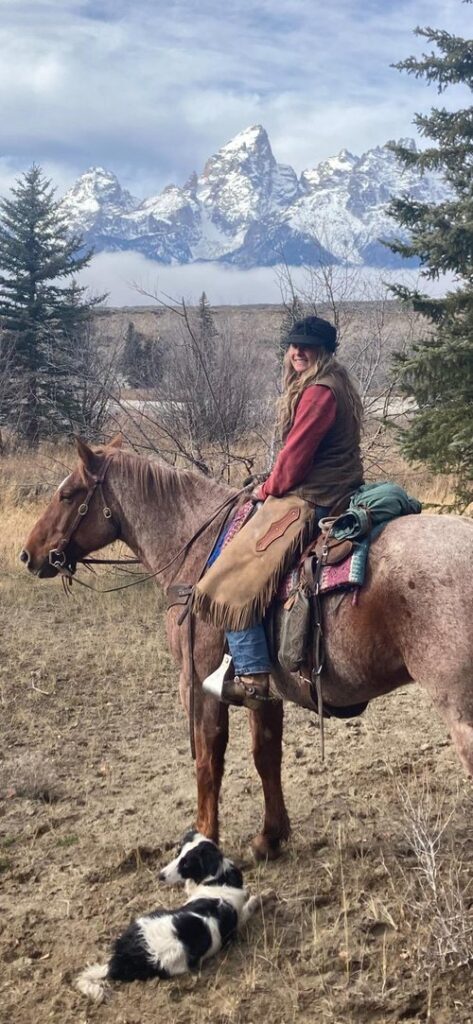THE RISING COST OF EVERYTHING: Caring for Others Comes at a Steep Cost
An Emergency Room CNA struggles to make ends meet in the face of inflation
- Published In: Other News & Features
- Last Updated: Sep 14, 2022

By Melissa Thomasma
Special to the Wyoming Truth
For a small-town hospital, St. John’s Health in Jackson Hole receives a disproportionate number of patients with a diversity of conditions rarely seen in other Wyoming towns of the same size. This is part of why Ginny Dorsey loves her role as a Certified Nursing Assistant in the Emergency Department.

When the COVID-19 pandemic struck, Dorsey, 32, seized the opportunity to work at Jackson’s only hospital. She’s passionate about patient care, but finds it increasingly difficult to live on her salary.
Spiraling inflation has exacerbated the problem—and there’s no end in sight. On Tuesday, the Bureau of Labor Statistics’ August Consumer Price Index report showed that inflation hit 8.3% on a year-over-year basis, while core inflation ticked up .6% month-over-month. This news prompted the Dow Jones Industrial Average to plummet 3.94% for the worst single-day selloff since June 2020.
“With what they pay at the hospital, it takes almost two paychecks just to make rent,” Dorsey said. “Sometimes I wonder: Why am I working so hard to live here when I don’t get to enjoy it?”
Over the past decade, Dorsey has always held down multiple jobs to cover her household expenses and enjoy her other passion: her horses. It’s her equine enthusiasm that has suffered most notably from rising prices.
“I went from paying $200 for a ton of hay to $500 a ton this year,” said Dorsey, who needs around eight tons of hay to feed her four horses over the winter—a price tag that’s become burdensome. “I know that’s partially the lack of rain and water, but also farmers raising prices because of their fuel costs, and it trickles down.”
In addition to her full time job in the ER, Dorsey waited tables at a downtown restaurant, found part-time work as a nanny and offered riding lessons to stay afloat over the summer—an effort that involved over 60 hours of work each week. In the past couple of months, it hasn’t been enough.
“It’s hard; I work so much, these other things become a blur,” Dorsey said. “I haven’t gotten my hair done in four years. I used to love to color my hair, but I don’t want to spend $300 to get it maintained every six weeks. I don’t go out to eat, that’s something I’ve had to cut. It’s so expensive; I just don’t do it anymore.”
As summer weather allowed, Dorsey biked to and from work — 16 miles round trip – to save money on fuel. “I like to bike, but when you’re working a 12-hour shift, it means a 14-hour day,” she noted.
Dorsey is grateful that she’s had stable housing with reasonable rent for a few years. Her small cabin is far from luxurious; it’s heated by a single wood stove, has no shower and relies on a water well that was hand-dug in the 1940s. “The water tastes like pennies and the bath water is always a little brown,” she said. “I have to fill up water bottles at work.”
As other costs continue to swell, even this humble abode is becoming unaffordable. When the coldest months subside, Dorsey plans to move into her horse trailer on several acres in Star Valley where she can keep her horses. It’s insulated, and the gooseneck provides a spot for a bed.
“It’s better than living in a car,” she said with a shrug.
Dorsey intends to keep her job at St. John’s after her move. She’s hopeful that living rent-free will offset the increase in fuel costs to facilitate the 100-mile round-trip commute. Dorsey’s passion for patient care hasn’t waned, but as the cost of living soars, she worries that like so many CNAs and nurses she’s worked with, she’ll be forced to move away or work elsewhere.
“We’re living in a rich man’s world out here; it feels like people like us come second,” she said. “It’s hard to realize you may not be able to afford to do a job that you really want to do.”













